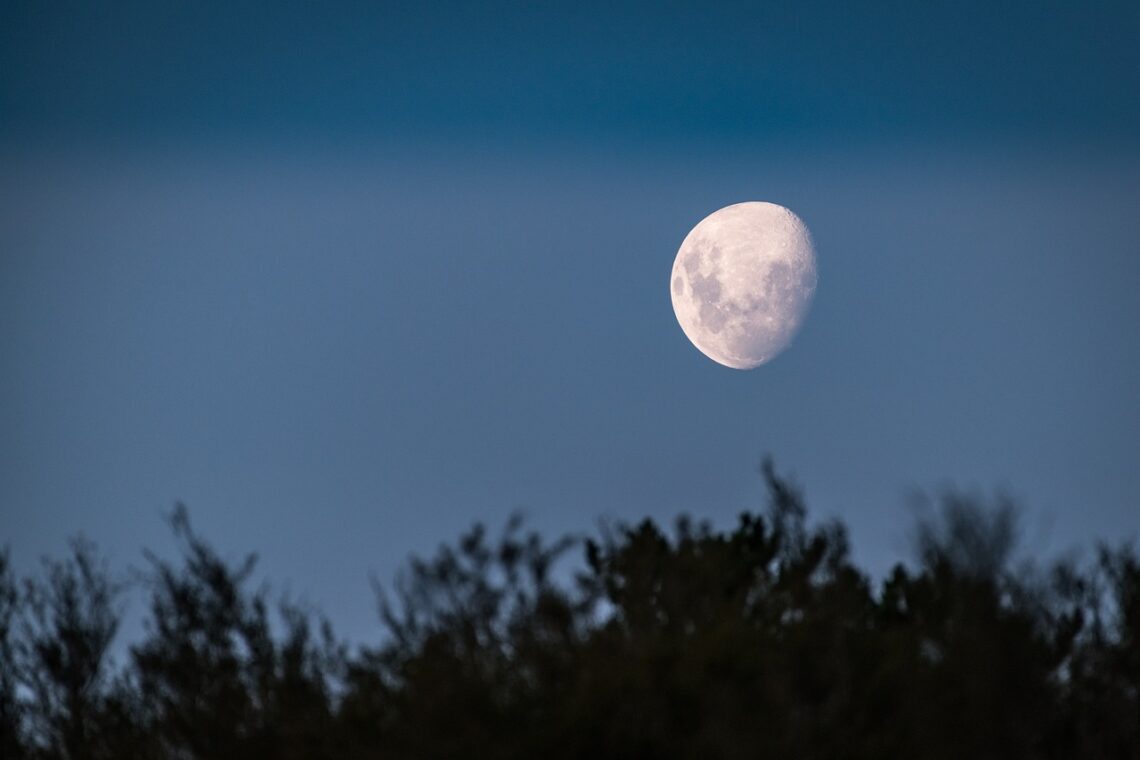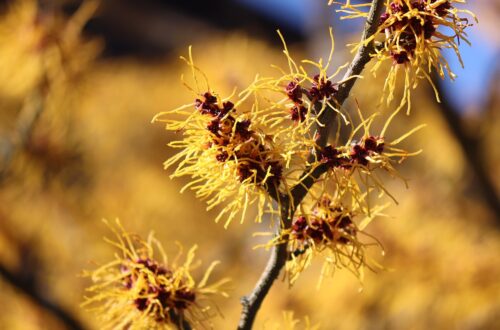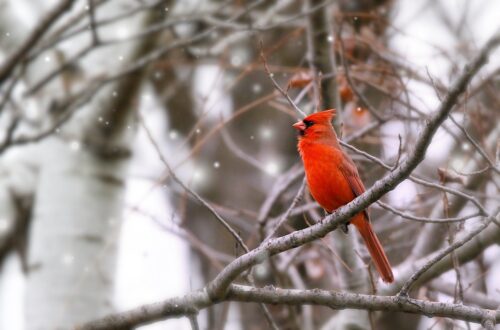A moon garden comes alive after dark, dazzling garden-goers and nocturnal pollinators with night-blooming flowers!
Moon gardens are magical spaces filled with night-blooming flowers and heady floral scents that seem to deepen after dark. But while moon gardens are mostly grown for ornamental appeal, these night gardens can also be used to attract nocturnal pollinators if you choose the right plants!
In the tips below, you’ll learn how to create your own moon garden, but you’ll also find planting suggestions that will specifically appeal to native nocturnal pollinators, like moths and fireflies. If you’re looking for more ways to attract pollinators or you just want to create a unique garden design, these pollinator-friendly moon garden ideas are worth a try!
Affiliate disclosure: As an Amazon Associate, I may earn commissions from qualifying purchases.
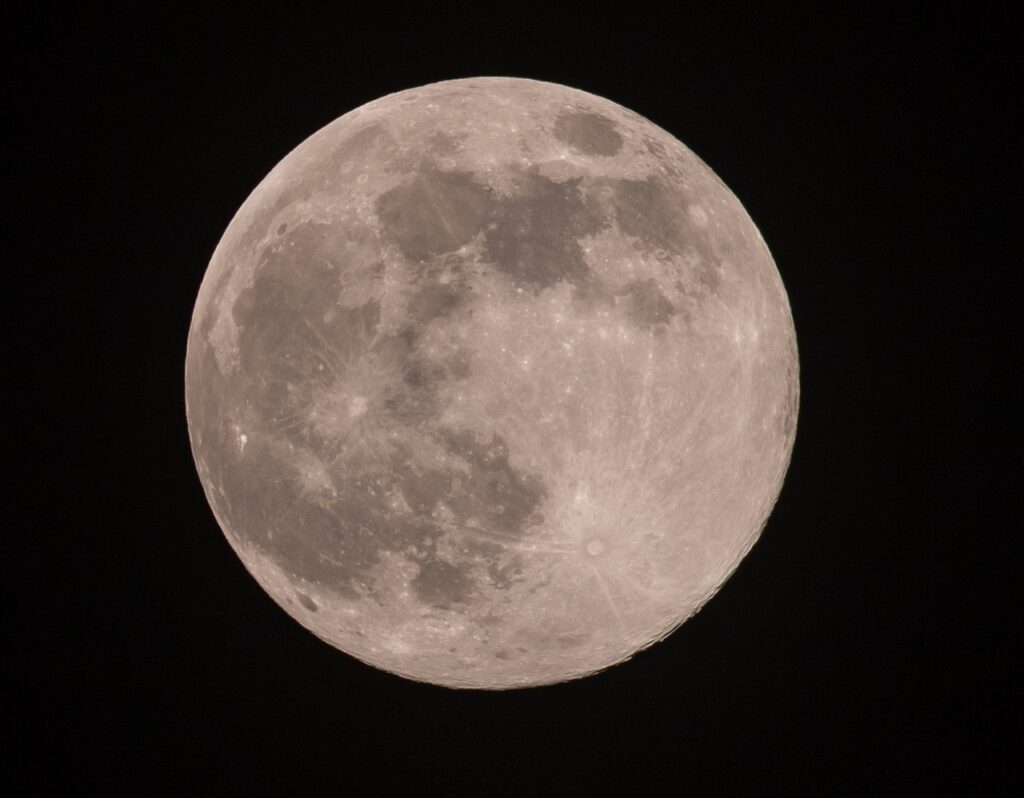
What Are Moon Gardens?
Moon gardens are unique spaces intended for nighttime use! These gardens are usually planted with white or pale-colored flowers and plants with silver-toned or variegated leaves that glow in the moonlight. Moon gardens can also be filled with other treats for the senses, like a trickling water fountain or twinkling windchimes.
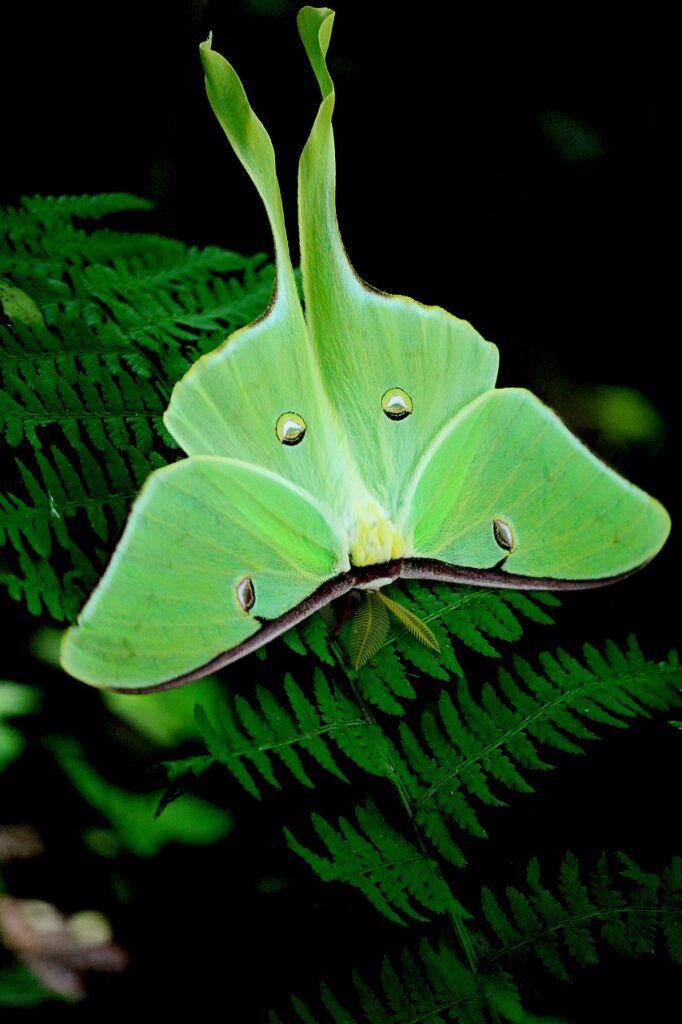
What Pollinators Do Moon Garden Flowers Attract?
Nocturnal pollinators are vulnerable to the same stressors as daytime pollinators, including habitat loss and pesticides. Growing a moon garden for pollinators can protect these beneficial critters and give them a safe place to feed, lay eggs, and shelter during winter. Some of the night pollinators you may attract with a moon garden include:
- Moths, like luna moths and Cecropia moths
- Fireflies and other nocturnal beetles
- Some species of bees (yes, there are a few nocturnal bees!)
- Nectar-drinking bats
- Insect-eating bats (good news if you want to get rid of mosquitoes!)
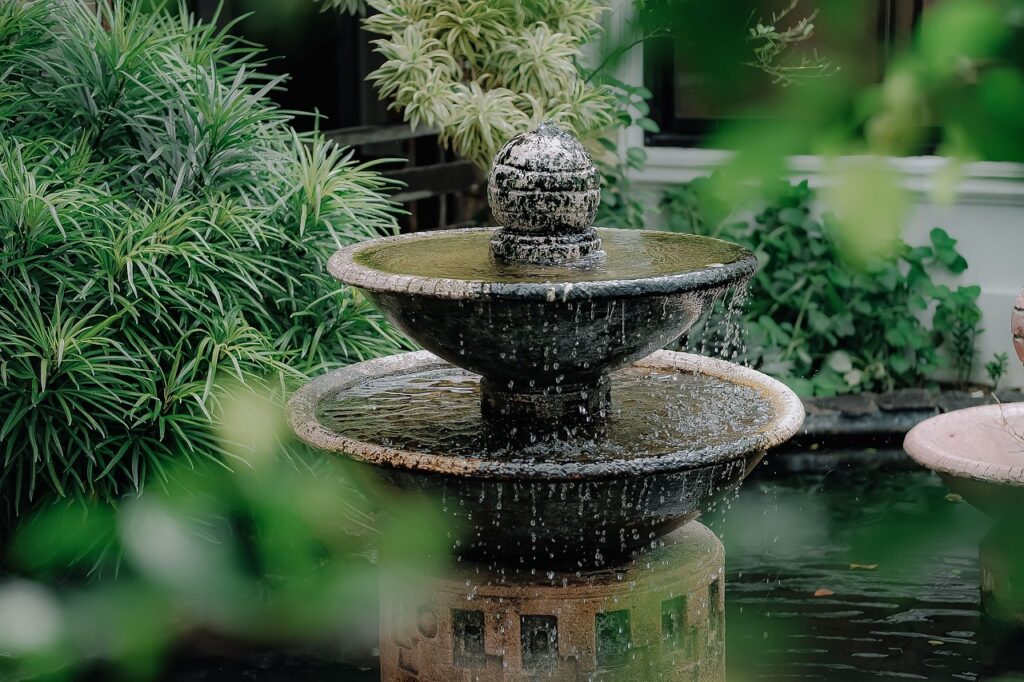
Quick Tips for Creating a Moon Garden for Pollinators
Moon gardens are typically composed of plants with variegated or silver-toned leaves and pale flowers that show well after dark. But if you want to attract nocturnal pollinators, also include as many night-blooming native plants as you can. Moon gardens don’t need to be big, but they should be located in a spot where they’ll receive an appropriate amount of sun for the types of plants you want to grow.
For a moon garden that dazzles, include as many of these design elements as you can:
- Pale plants with night-blooming flowers. Plants with variegated or silver-toned leaves and pale flowers shimmer in the low glow of the moon. Extra pollinator points if those plants are native to your growing area!
- Fragrant plants. Colorful plants don’t show well after dark, but fragrant plants come alive when the sun goes down. Including plants with aromatic flowers and leaves in your landscape design will add more complexity and charm to your moon garden.
- A sound element. Trickling fountains or windchimes make gardens feel even more magical.
- A moving element. Windchimes technically count as a moving element, but so do tall ornamental grasses and other plants that dance and whisper in the wind. This can make moon gardens feel even more transportive!
To attract nighttime pollinators, remember to include these pollinator resources too:
- Food. Native, night-blooming plants are the best food sources for nocturnal pollinators, although nighttime pollinators may also take advantage of hummingbird feeders.
- Water. Putting out a terracotta plant saucer filled with clean gravel and a bit of water can give small pollinators a safe place to drink. Or try another water feature option like a small fountain, bird bath, or drip irrigation system.
- Shelter. Pollinators hibernate in old leaf litter, so wait until spring to clean up your beds. You can also install a bat box, and grow plants with hollow-stems for stem-nesting bees and native conifers for fireflies.
- Safety. Keep pesticides out of your garden as these products affect pollinators too. Instead, opt for organic pest control techniques, like pest barriers, crop rotation, and companion planting.
Also, don’t forget to limit light pollution! Outdoor lights left on after dark interfere with the moon’s glow, but they also make it harder for nighttime pollinators to feed, mate, and avoid predators. Using blackout curtains and putting outdoor lights on a timer can help.
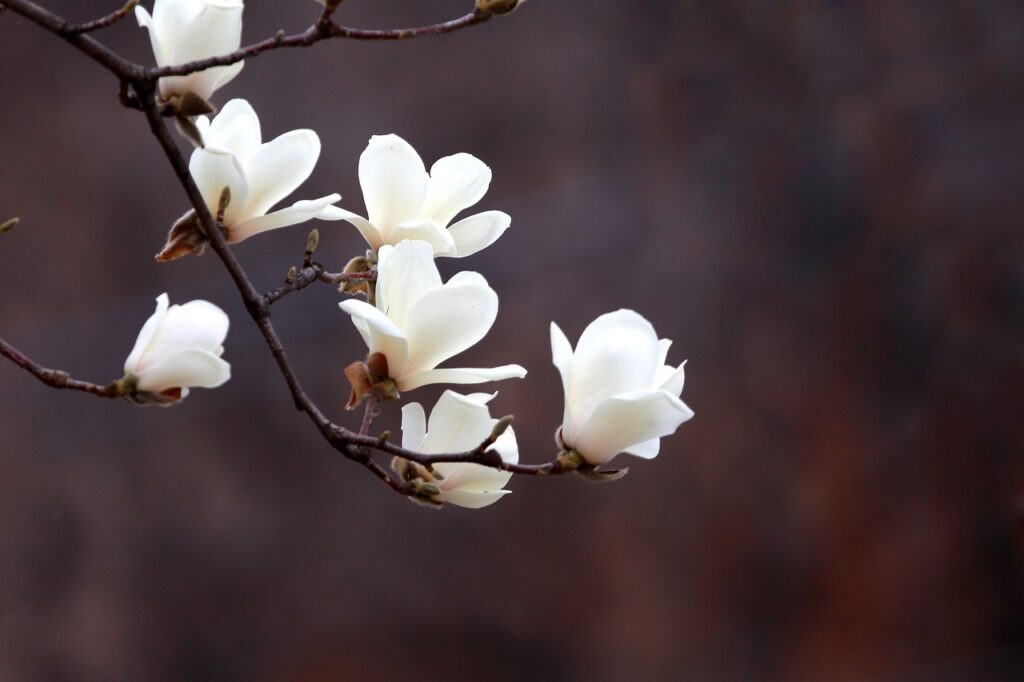
16 Native Moon Garden Plants to Grow for Night Pollinators
When choosing native plants for your moon garden, look for plants with pale leaves and light-colored flowers that bloom after dark. If possible, select plants that bloom at different times of the year and plant flowers in groups of 3 or more to make it easier for pollinators to feed.
Here are just a few North American native plants for moon gardens. But I encourage you to check out native plant websites that are local to your area to find even more planting suggestions!
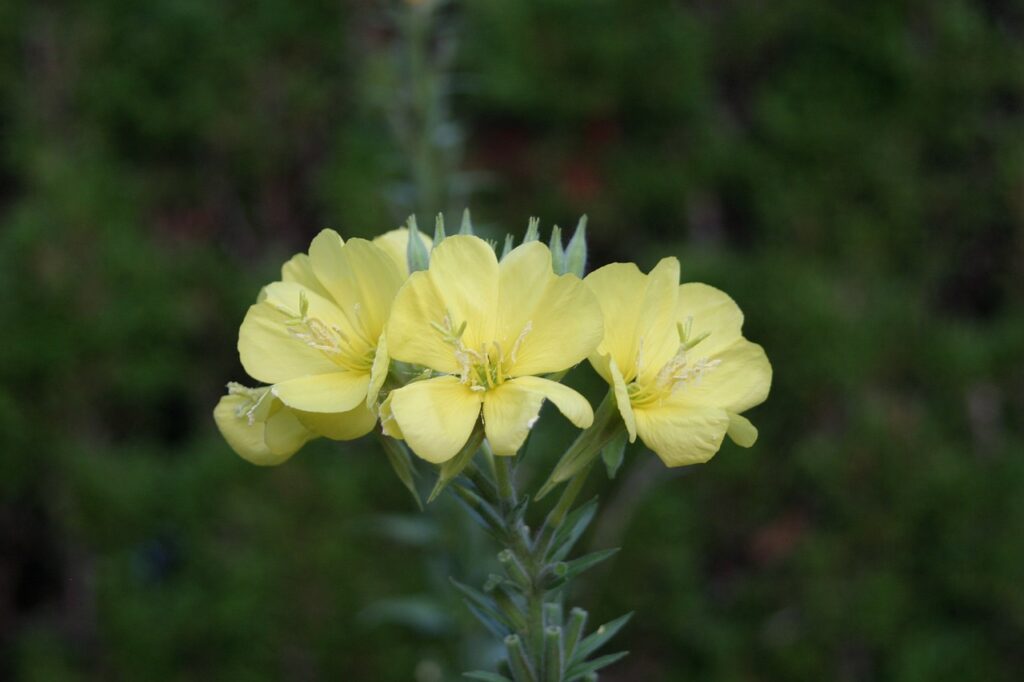
1. Common Evening Primrose (Oenothera biennis)
There are lots of primrose species, but the common evening primrose is the plant you’re likely to spot growing wild in fields and along roadways. This plant has an upright growth habit, lemon-yellow flowers, and it loves dry soil and lots of sun. Among its many charms, evening primrose serves as a host plant for various moths, including hummingbird moths!
Light: Full sun to part shade
Native range: Eastern and Central United States and Canada
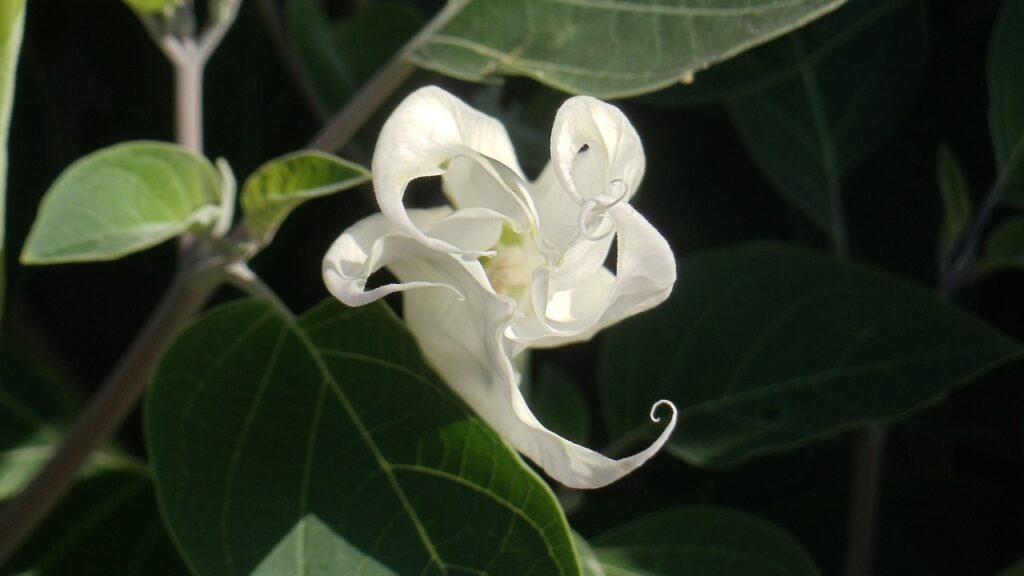
2. White Moonflower (Ipomoea alba)
Aptly named moonflowers bloom after dark and their ephemeral blooms last for just a single evening. Like their relatives the morning glory, moonflower seeds grow quickly into vining plants that look best on trellising. Moonflowers serve as host plants for several species of butterflies and moths and they can be grown as perennials in warm spots or annuals in cooler areas.
Light: Full sun
Native range: Parts of South and South Central United States
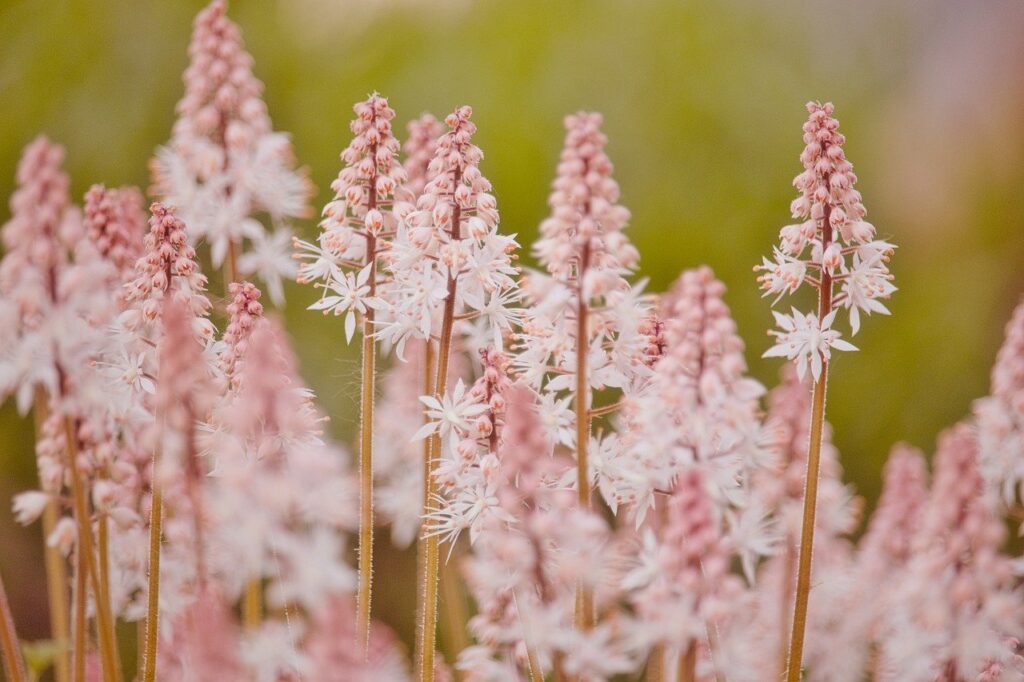
3. Foamflower (Tiarella cordifolia)
A top choice for shade gardens, foamflowers produce frilly sprays of delicate, white flowers. These adaptable plants spread horizontally and they make exceptionally low maintenance groundcovers. Both day and nighttime pollinators love foamflower blooms!
Light: Full shade to part shade
Native range: Eastern United States and Canada
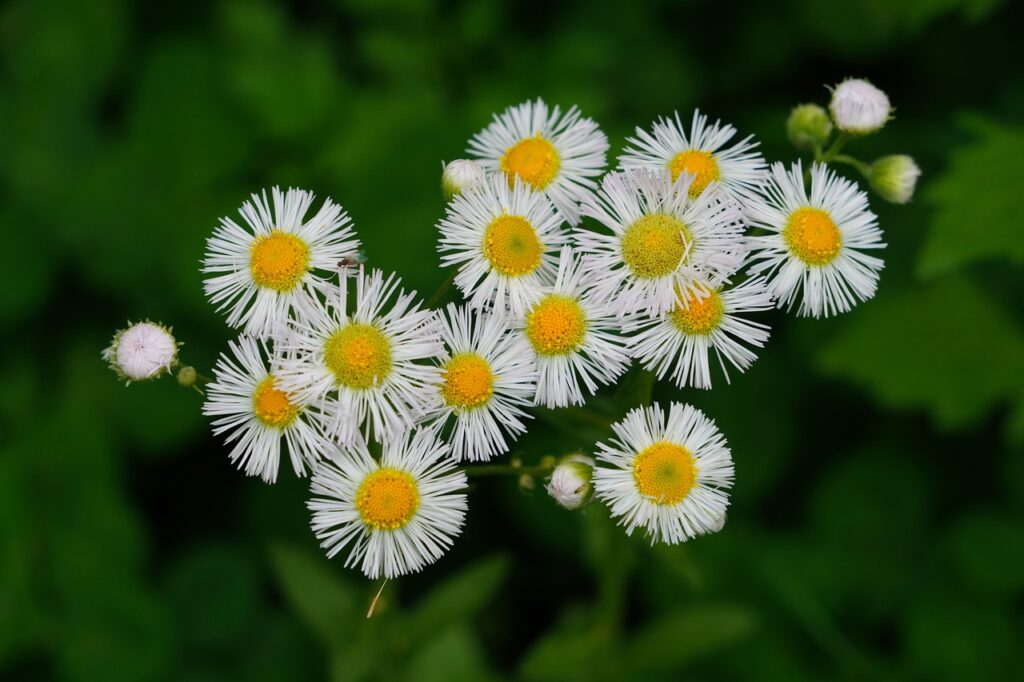
4. Daisy Fleabane (Erigeron annuus)
Many gardeners dismiss fleabane as a weed, but these daisy-relatives make dainty moon garden accent plants. Fleabane get its name from the old timey belief that these plants repel fleas. Whether that’s true or not, I can’t say, but fleabane does attract bees, butterflies, and moths!
Light: Full sun
Native range: Most of North America
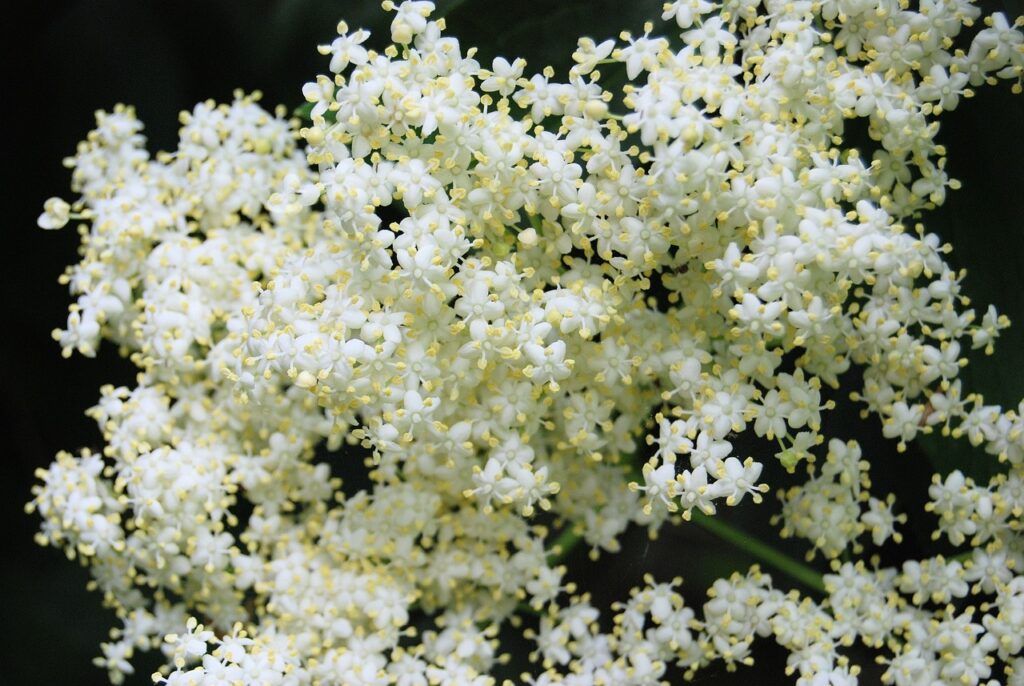
5. Common Elderberry (Sambuca canadensis)
Elderberry is commonly grown for syrup making, but it’s also a fantastic pollinator plant. Broad, flat, white flowers show well after dark and they also make easy landing pads for large moths. While birds love elderberry fruit, these plants also serve as hosts for North America’s largest moth: the Cecropia moth!
Light: Full sun to part shade
Native range: Eastern and Central United States and parts of Canada
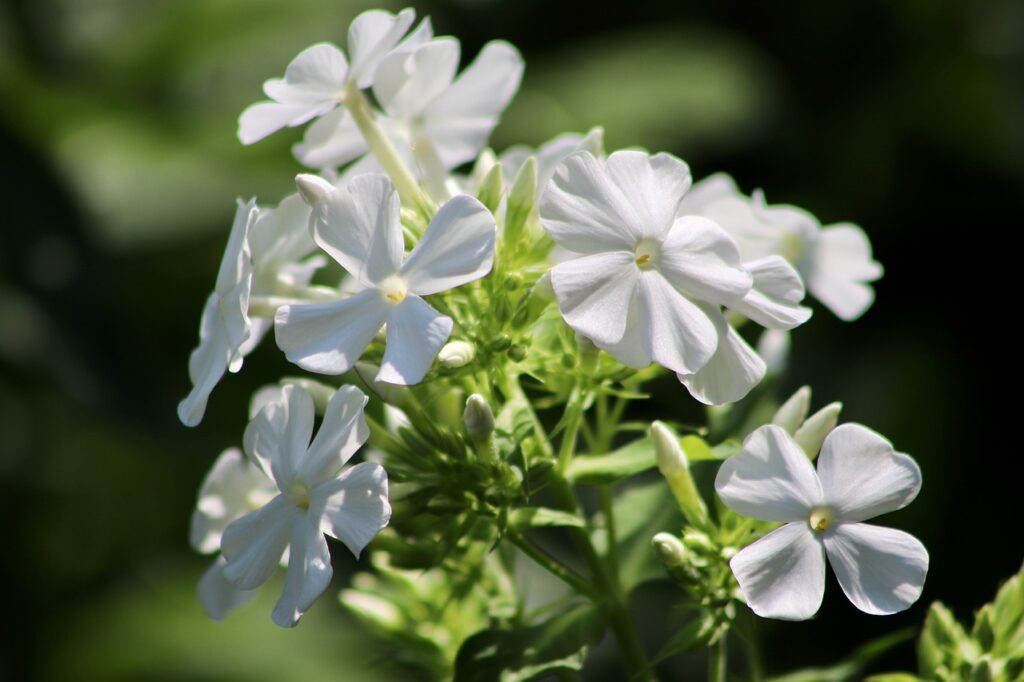
6. Garden Phlox (Phlox paniculata)
Garden phlox is the star of summer gardens with showy, upright blooms that emit a delicious scent. Although these plants come in shades of pink and purple, white-flowered varieties will show better in moon gardens. Butterflies and moths can’t resist these beauties!
Light: Full sun to part shade
Native range: Eastern and Central United States
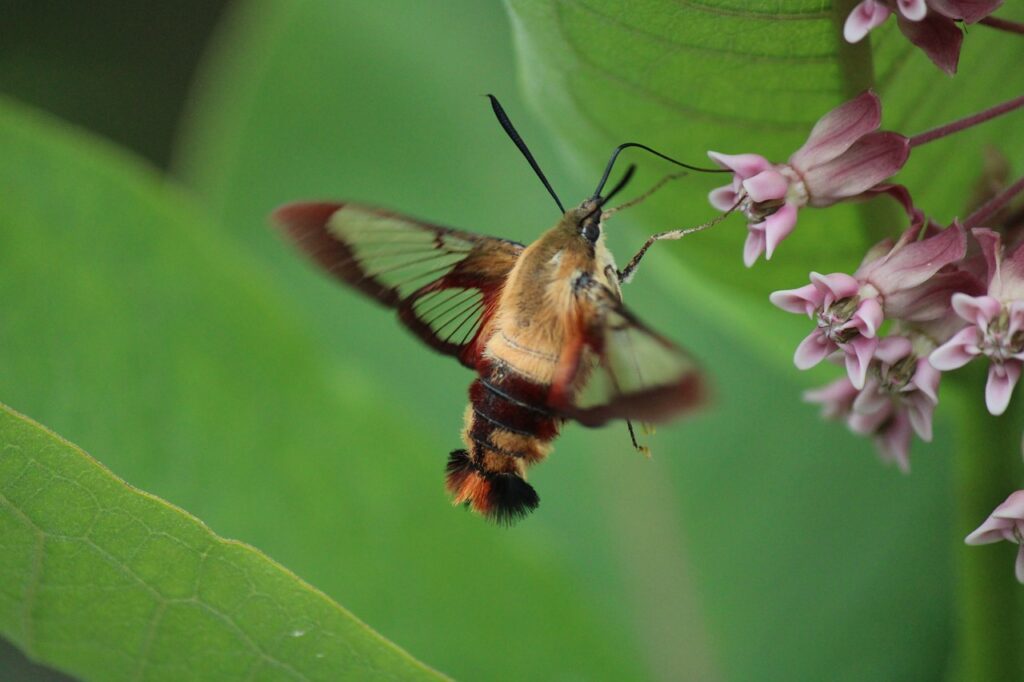
7. Showy Milkweed (Asclepias speciosa)
Milkweeds are go-to plants for pollinator gardens and moths love them just as much as butterflies do. You can grow any type of native milkweed in your moon garden and their light-colored flowers should glow prettily after dark. However, showy milkweed is a particularly attractive native milkweed with star-shaped blooms that add extra texture to flower beds.
Light: Full sun
Native range: Central and Western United States and parts of Canada
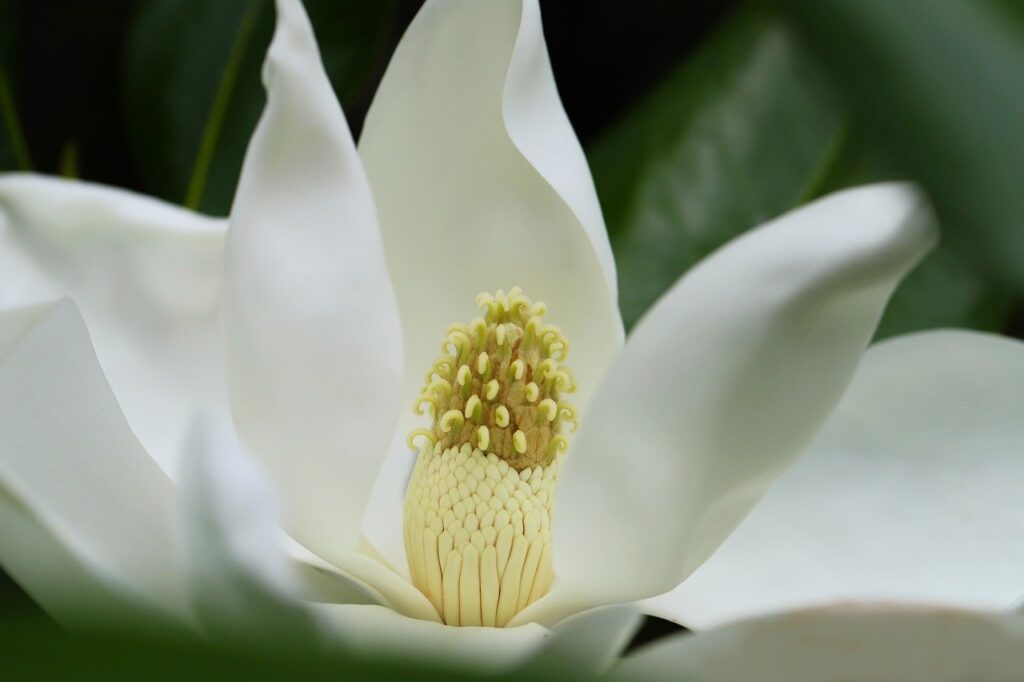
8. Sweetbay Magnolia (Magnolia virginiana)
North America has a number of native magnolias that can be used in moon gardens, but the sweetbay magnolia has a lot to recommend it. These semi-evergreen trees can grow between 10 and 35 feet tall and they make stately backdrops for lower growing moon garden plants. Sweetbay magnolias are mostly known for their rich fragrance, but their large, white flowers attract pollinators and are especially appealing to beetles.
Light: Full sun to part shade
Native range: Eastern and Southern United States
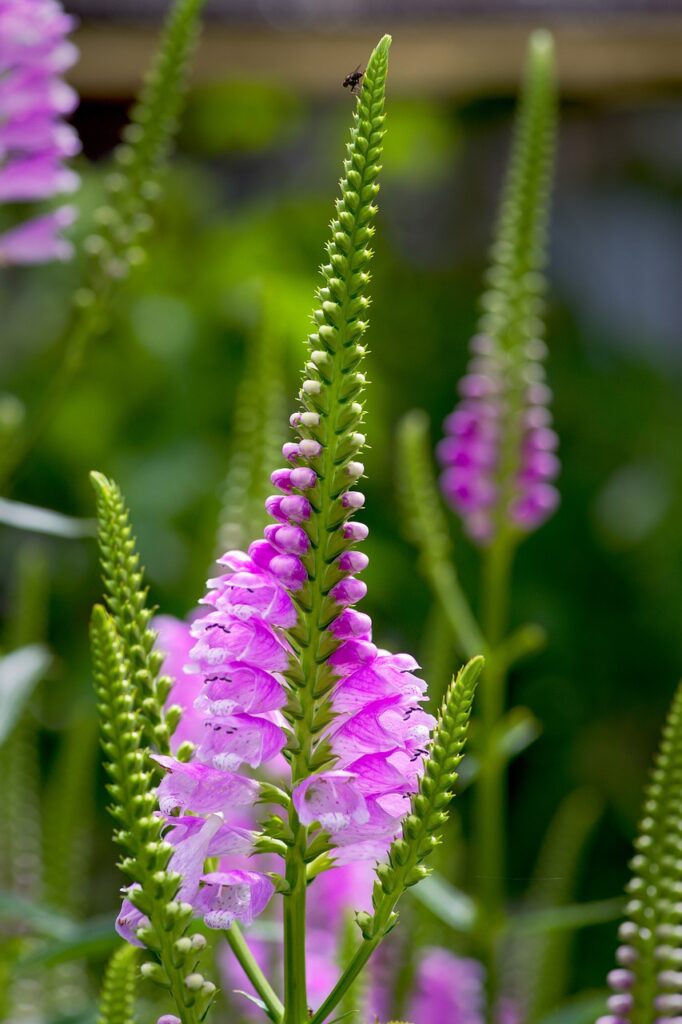
9. Obedient Plant (Physostegia virginiana)
The obedient plant gets its name from the fact that you can move its flowers around and the flowers will stay “obediently” in position. With their tall spires of pale pink blooms, obedient plants look a bit like foxgloves, although these two plants aren’t closely related. Hummingbird moths are particularly fond of obedient plants, but these plants also appeal to diurnal pollinators like hummingbirds, long-tongued bees, and butterflies!
Light: Full sun to part shade
Native range: Eastern and Central United States and parts of Canada
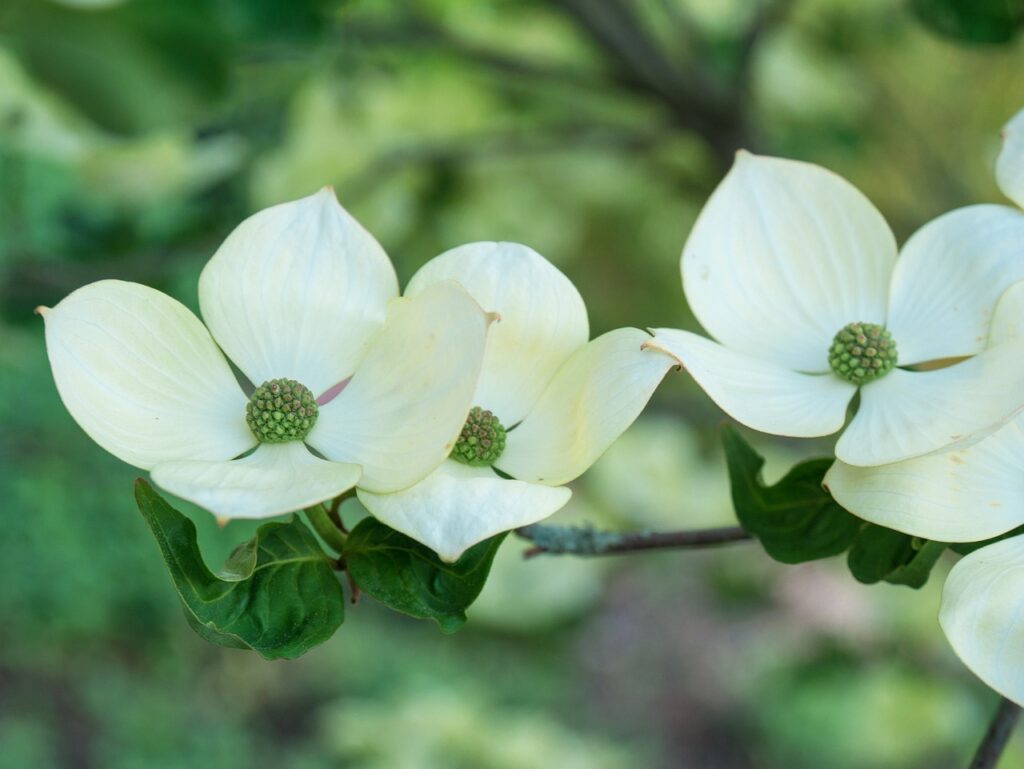
10. Flowering Dogwood (Cornus florida)
Flowering dogwood produces bright white flowers that are easy to spot in garden moonlight. These short trees grow wild as understory plants on the edges of forests, but they’ll do just fine in sunny or part shade gardens. Cecropia moth caterpillars feed on dogwood leaves, while dogwood’s bright red fruit is irresistible to birds.
Light: Full sun to part shade
Native range: Eastern and Central United States and parts of Canada
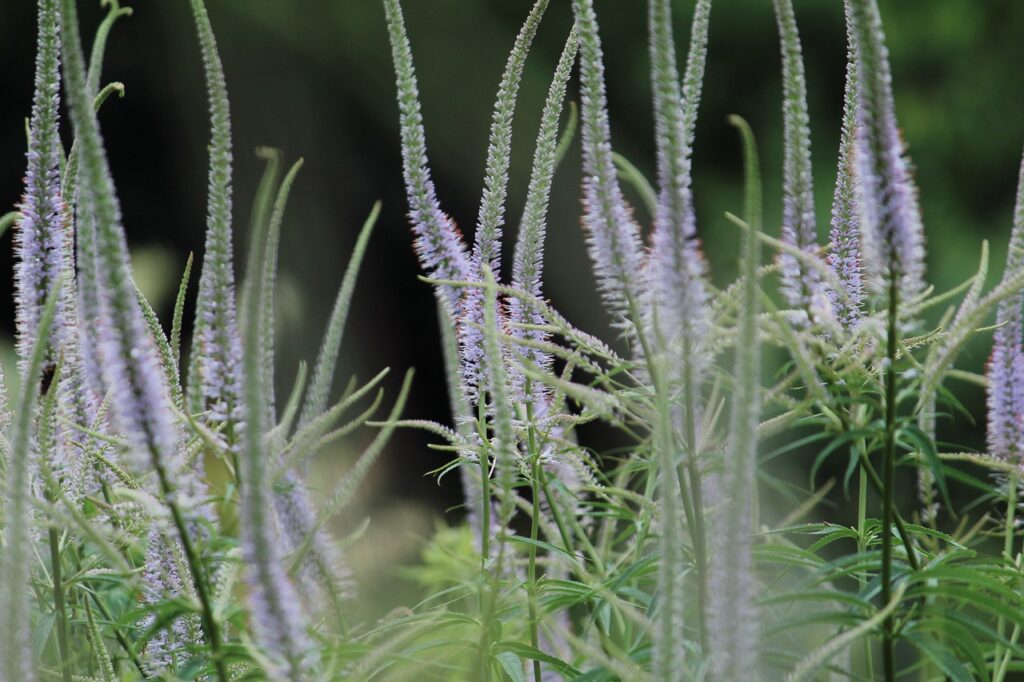
11. Culver’s Root (Veronicastrum virginicum)
Culver’s root is a statement plant with tall, slender flowers that add elegantly clean lines to moonlight gardening designs. These plants have historically been used for medicinal purposes, but they are also host plants for buckeye butterflies and they appeal to nighttime pollinators too. Culver’s root blooms abundantly in mid-summer and can stretch up to 6 feet tall when mature!
Light: Full sun to part shade
Native range: Eastern and Central United States and parts of Canada
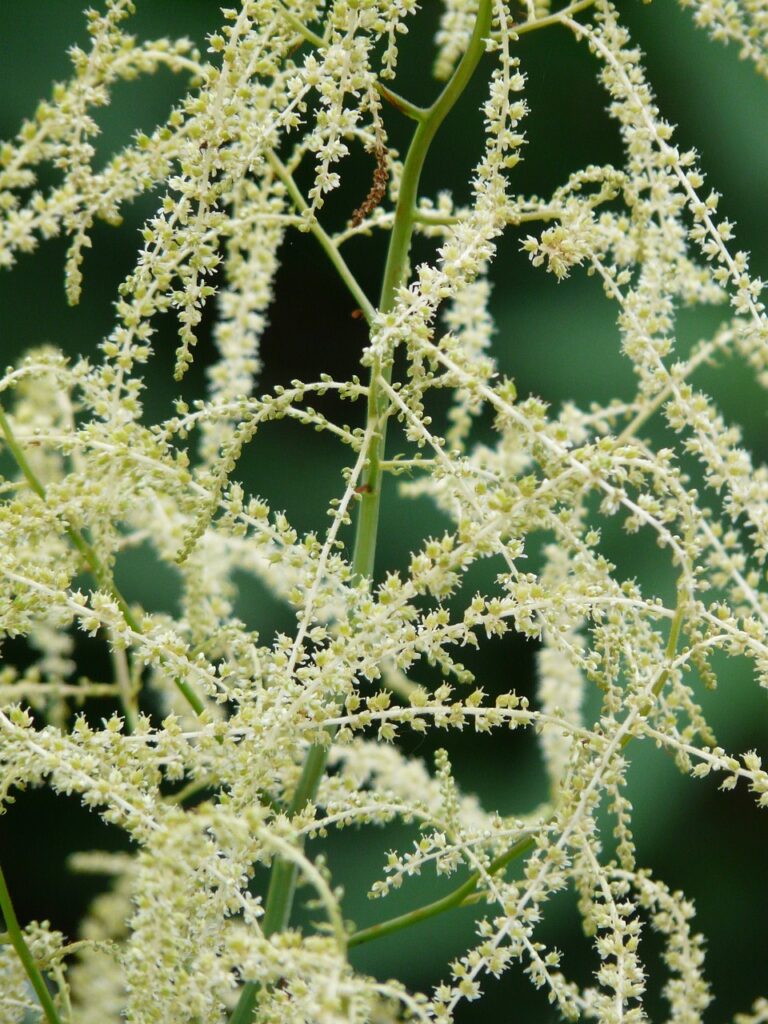
12. Goat’s Beard (Aruncus dioicus)
Goat’s beard makes a big impact in native landscaping designs with foamy cascades of bright white flowers that seem to shimmer in the moonlight. These plants grow to about 4 to 6 feet tall, so feel free to use them as garden backdrops or as foundation or specimen plants. Goat’s beard is a host for the Dusky Azure butterfly, but it also attracts nocturnal moths and beetles.
Light: Full sun to full shade
Native range: Parts of Eastern, Central, and Western United States
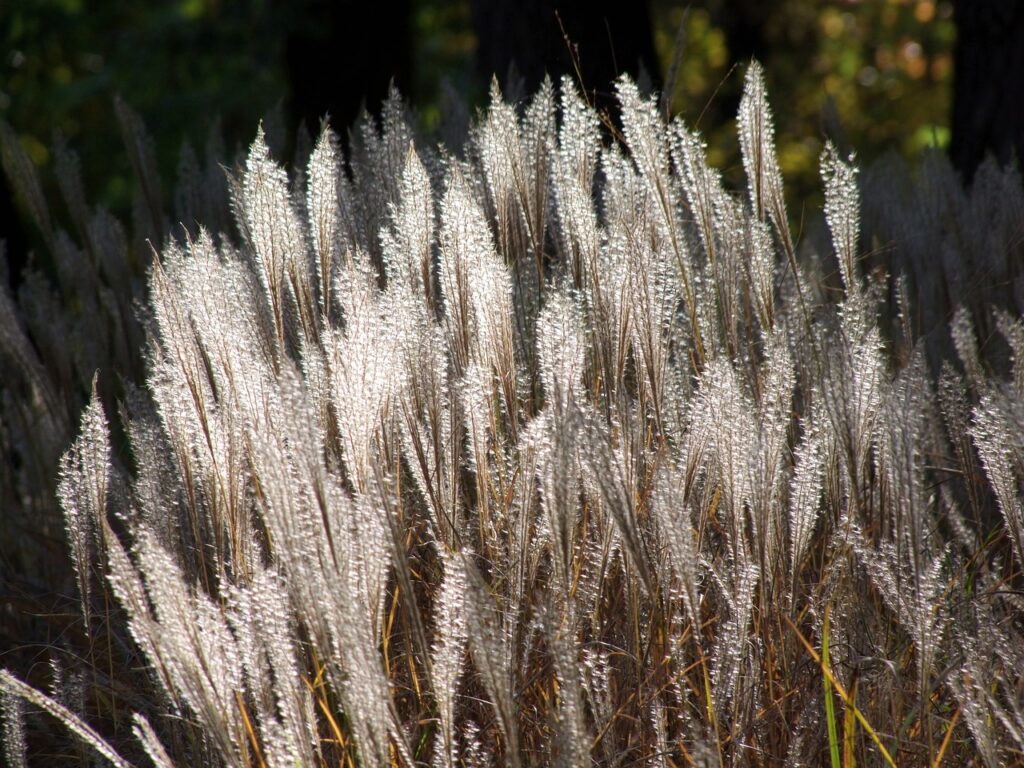
13. Native grasses
The best ornamental grasses to grow in moon gardens are native grass plants with light-colored or silvery leaves. Short grasses can be used as garden borders, but taller varieties make spectacular backdrops for lower growing plants. Grasses add extra movement to garden beds and their rustling leaves bring a touch of enchantment to moonlit landscapes.
Light: Depends on variety
Native range: Depends on variety
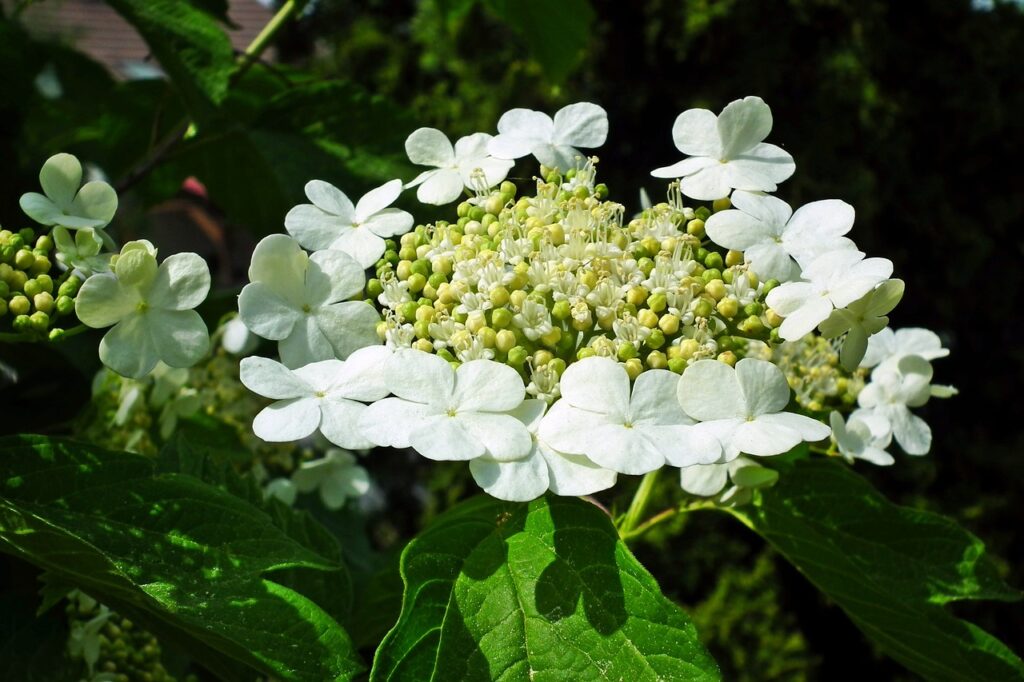
14. Native Viburnums (Viburnum spp.)
North American has a number of native viburnums, including the mapleleaf viburnum (Viburnum acerifolium), the hobblebush (Viburnum alnifolium), and the highbush cranberry (Viburnum trilobum). Choose a viburnum species that’s native to your area and look for varieties with white flowers for moon garden use. Beyond their nectar-rich flowers that draw pollinators in, most viburnums produce fall berries for birds, and their leaves change into brilliant shades of red in autumn.
Light: Full sun to part shade
Native range: Depends on variety
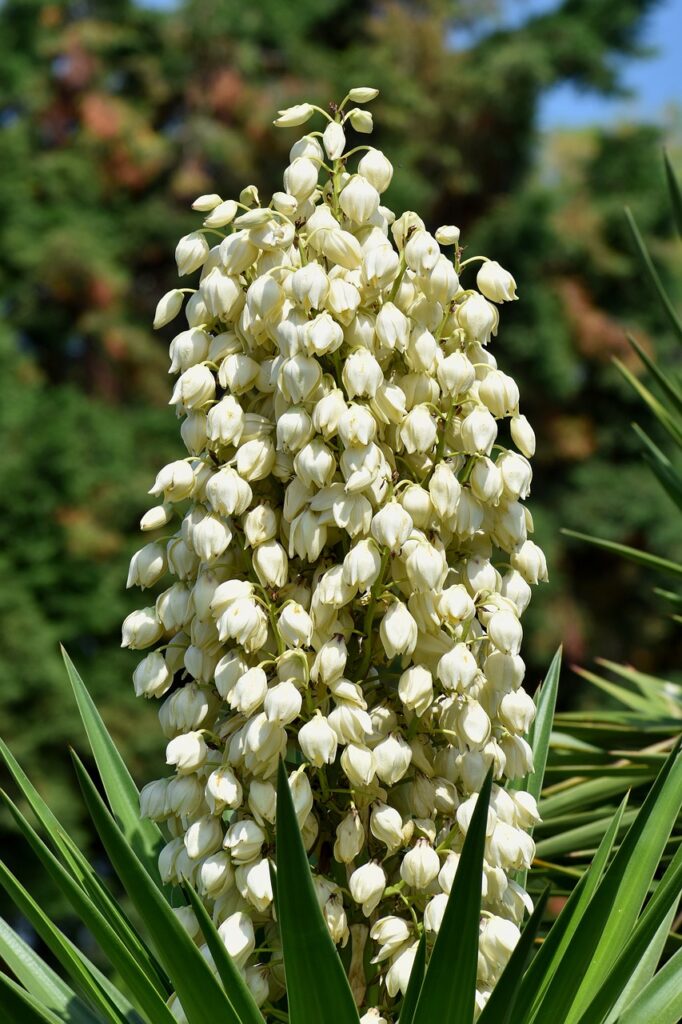
15. Adam’s Needle (Yucca filamentosa)
Adam’s needle has a striking silhouette with spiky leaves and a large spire of creamy-white, fragrant flowers that stretch up to 6 feet tall. While hummingbirds are particularly fond of Adam’s needle, these plants are mostly pollinated by white yucca moths. Adam’s needle is often grown in rock gardens and it’s naturally drought-resistant!
Light: Full sun to part shade
Native range: Southeastern and South Central United States
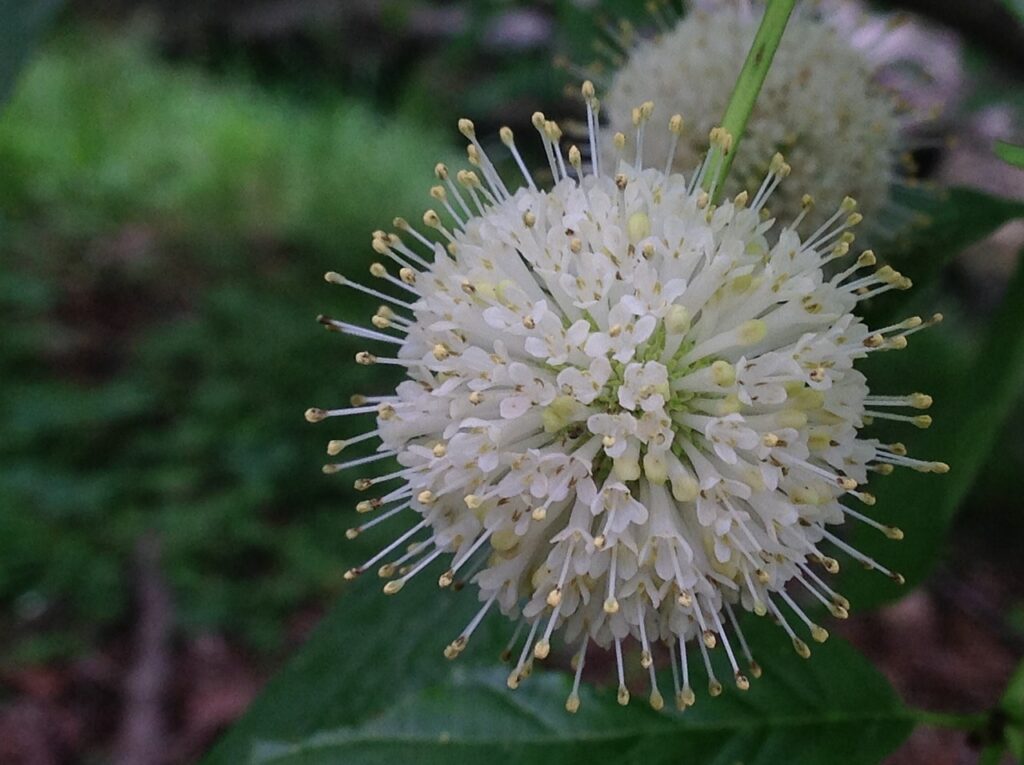
16. Buttonbush (Cephalanthus occidentalis)
Buttonbush is a must-have plant if you want to support moths. This water-loving shrub serves as a host for about 25 species of butterflies and moths, including the titan sphinx moth, and it’s often grown in rain gardens due to its high water tolerance. Beyond its sheer utility, buttonbush has a curiously fun look with spherical flowers that resemble tiny, glowing orbs in moon garden designs.
Light: Full sun to part shade
Native range: Eastern, Central and parts of Western North America
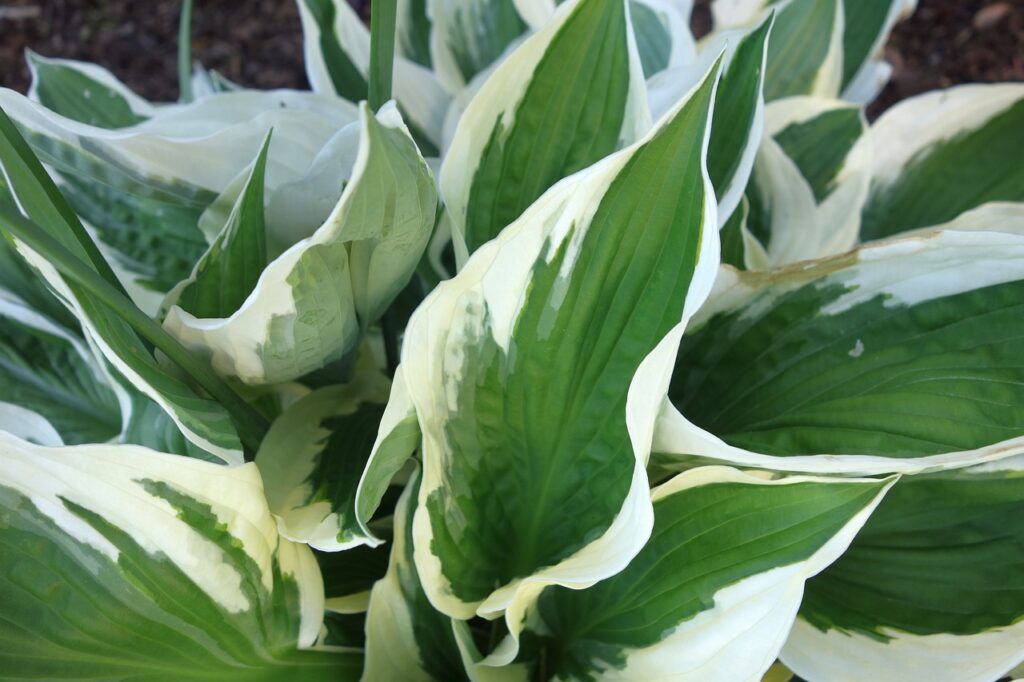
Other Plants to Grow in Moon Gardens
If your goal is to attract nighttime pollinators, native night-blooming flowers should form the foundation of your moon garden. But you can add even more pizzazz to your landscape by growing a few non-native plants with silvery-leaves and pale flowers, such as:
- ‘Silver Mound’ Artemisia
- Dusty Miller
- Lamb’s Ear
- Flowering Tobacco
- Lavender
- Mock Orange
- Variegated Hostas
- Angel’s Trumpet
- White Bleeding Hearts
- White Peonies
- Gardenia
- Narcissus
- ‘Casa Blanca’ Lilies
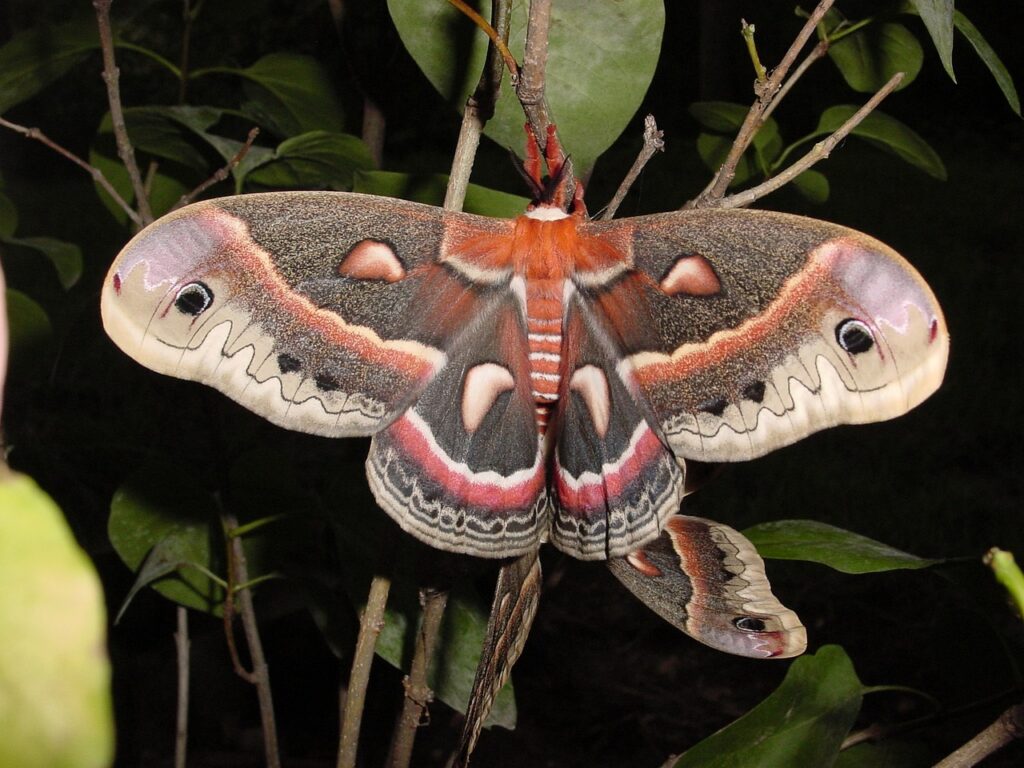
Frequently Asked Questions About Moon Planting for Pollinators
What is the purpose of a moon garden?
Moon gardens can be just for looks, but they can also be resources for nighttime pollinators. By adding a few native plants, and perhaps a water feature, you can transform a moon garden into an oasis for Luna moths, fireflies, and more!
Does pollination take place at night?
Yes, pollination does occur at night! In fact, some night-blooming flowers are only pollinated after dark by nocturnal pollinators.
What pollinators pollinate at night?
Bats and moths are efficient nighttime pollinators, but some species of beetles also pollinate at night. Fireflies, some types of lizards, mice, and even some species of bees do their best pollinating after dark too!
